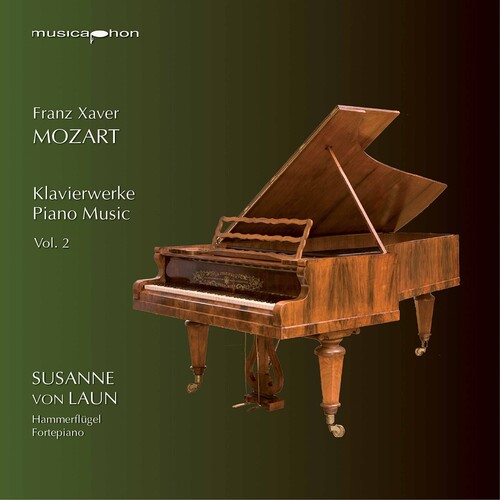Show results for
Deals
- 4K Ultra HD Sale
- Action Sale
- Alternative Rock Sale
- Anime sale
- Award Winners Sale
- Bear Family Sale
- Blu ray Sale
- Blues on Sale
- British Sale
- Classical Music Sale
- Comedy Music Sale
- Comedy Sale
- Country Sale
- Criterion Sale
- Electronic Music sale
- Fantasy Film and TV
- Folk Music Sale
- Hard Rock and Metal Sale
- Horror Sci fi Sale
- Jazz Sale
- Kids and Family Music sale
- Kids and Family Sale
- Metal Sale
- Music Video Sale
- Musicals on Sale
- Mystery Sale
- Naxos Label Sale
- Olive Films on Sale
- Page to Screen Sale
- Paramount Sale
- Pop and Power Pop
- Rap and Hip Hop Sale
- Reggae Sale
- Rock and Pop Sale
- Rock Legends
- Soul Music Sale
- TV Sale
- TV Sale
- Vinyl on Sale
- War Films and Westerns on Sale

Works for Piano 2
- Format: CD
- Release Date: 5/1/2020

Works for Piano 2
- Format: CD
- Release Date: 5/1/2020
- Label: Musicaphon
- UPC: 4012476569468
- Item #: 2283635X
- Genre: Classical
- Release Date: 5/1/2020

Product Notes
Franz Xaver Mozart was born the sixth child of Constanze and Wolfgang Amadeus Mozart on September 21, 1791 in Vienna. His father died a few months later. Franz Xaver Mozart looked very much like his father, and Constanze called him Wolfgang. His works were published throughout his life under the name "Wolfgang Amadeus Mozart, son, fils or figlio". Constanze recognized the musical talent of her youngest son early on. She had him trained with the most important teachers, among them Salieri and Albrechtsberger, who, interestingly enough, were also Beethoven's teachers. Franz Xaver studied piano playing with Johann Nepomuk Hummel, a former student of his father. The first composition published was the Quartet in G Minor, 1805, which was created two years earlier. However, his compositions did not attract as much attention as his piano playing. From 1819 to 1821 Franz Xaver undertook extensive concert tours through German-speaking Europe, Denmark, Russia and Italy. For the pianist Mozart, variations were an ideal form to demonstrate his virtuosity, and they could also be used excellently in teaching. An instrument from the Beurmann Collection in Hamburg was used for these recordings: The fortepiano by Johann Baptist Streicher (1863).

